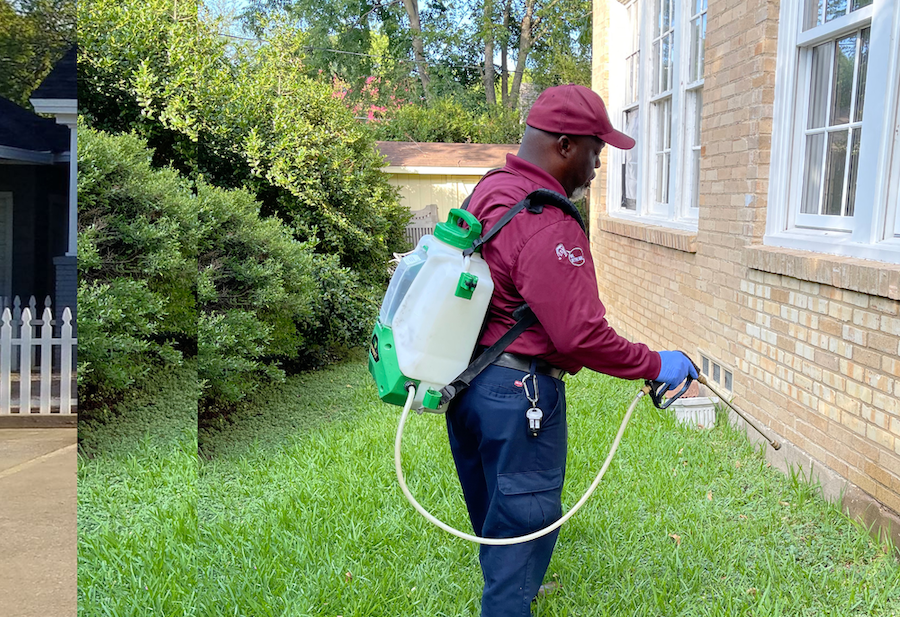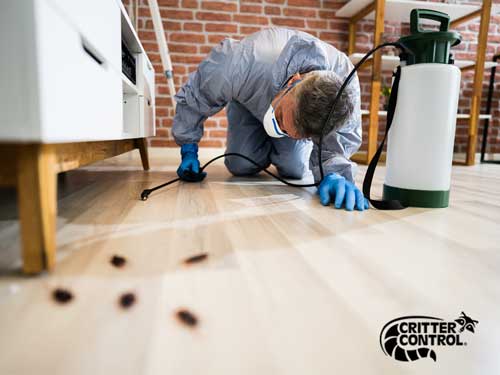Experienced A1 Exterminators Charlotte NC - Quick and Reputable Solutions
Wiki Article
Bed Bug Therapy Break Down: Contrasting Chemical Vs. Non-Chemical Solutions
In the world of pest control, particularly when handling the relentless concern of bed bugs, the choice in between chemical and non-chemical therapy solutions can be a critical one. Both techniques offer distinct benefits and downsides, affecting factors such as effectiveness, security factors to consider, and total price. By checking out the nuanced details of each technique, a clearer understanding of which path to seek in dealing with a bed insect invasion can be obtained.Performance of Chemical Treatments
Chemical treatments for bed bug infestations have actually been commonly identified for their rapid and potent effectiveness in eradicating these bugs. When considering the efficiency of chemical treatments, it is essential to comprehend that they can provide a quick and complete service to a bed pest issue. Expert pest control men commonly rely upon pesticides to target bed pests at various phases of their life process, including eggs, nymphs, and grownups. These chemicals generally work by interfering with the bed insects' nerve system, leading to paralysis and eventual fatality.Moreover, chemical therapies have the advantage of providing recurring results, indicating that they can continue to remove bed pests also after the preliminary application. This residual activity is specifically useful in combating any potential re-infestations. Additionally, the rapid action of chemical treatments can bring relief to people encountering serious bed bug infestations, permitting them to gain back control of their space quickly.
Safety And Security Interest In Chemical Solutions
When using chemical services for bed insect treatment is guaranteeing the security of residents and the environment,One vital facet that requires careful consideration. While chemical therapies can be reliable in getting rid of bed bugs, they might posture dangers otherwise dealt with appropriately. One of the key safety and security concerns with chemical services is the potential injury they can trigger to human health. Direct exposure to certain chemicals used in bed insect therapies can result in respiratory issues, skin irritability, or other negative responses, specifically in individuals with pre-existing problems or sensitivities. Additionally, incorrect application or dosage of chemical pesticides can cause harmful deposits sticking around in the treated area, presenting long-term health threats to owners.In addition, the environmental influence of chemical solutions is another substantial consideration. Some pesticides utilized in bed pest treatments might be dangerous to advantageous bugs, wild animals, and ecosystems if they leach right into the dirt or water supply. It is important to use chemical treatments carefully, adhering to safety guidelines, and considering less hazardous choices to minimize these threats and make certain the efficient and risk-free management of bed insect invasions.
Benefits of Non-Chemical Techniques
Thinking about the potential safety and security problems and ecological influence related to chemical solutions for bed bug therapy, discovering non-chemical strategies provides an appealing option with a number of unique benefits. Non-chemical approaches supply a more secure alternative for families, specifically those with people, family pets, or youngsters conscious harsh chemicals. These strategies get rid of the risks of exposure to harmful substances, reducing the possibility for damaging wellness impacts. Additionally, non-chemical treatments are eco-friendly, as they do not add to air or water contamination, making them a sustainable selection for insect control.Additionally, non-chemical services can be efficient in targeting bed pests, consisting of hard-to-reach areas where chemical treatments may not permeate - A1 pest control services charlotte. Techniques such as warm treatment, vacuuming, heavy steam cleaning, and bed mattress coverings give comprehensive removal without the use of unsafe chemicals.
Limitations of Non-Chemical Treatments

Furthermore, non-chemical therapies frequently need numerous applications to attain effective eradication. This can be lengthy and might not constantly assure full elimination of all bed insects and their eggs, specifically in hard-to-reach or covert areas.
Additionally, the success of non-chemical therapies greatly counts on proper implementation and thoroughness, which can be challenging for individuals without expert competence. Insufficient application of non-chemical approaches might lead to incomplete obliteration, resulting in consistent invasions and the requirement for extra treatments.
As a result, while non-chemical therapies have their benefits, it is necessary to acknowledge these limitations and consider them when figuring out the most reliable method for managing bed bug infestations.
Cost Contrast: Chemical Vs. Non-Chemical Options
Given the limitations related to non-chemical this contact form therapies, an essential facet to evaluate in the context of bed pest monitoring is the expense comparison between chemical and non-chemical alternatives. Chemical therapies normally include the application of insecticides by professionals, which can range from find this $250 to $900 per room, depending on the extent of the problem and the dimension of the location to be dealt with. On the other hand, non-chemical therapies like warm treatment or heavy steam can be a lot more expensive, with prices ranging from $1,000 to $6,000 for an entire home. While the preliminary cost of chemical therapies may appear reduced, numerous therapies may be called for to completely eradicate the invasion, potentially raising the general price. On the other hand, non-chemical alternatives might supply a more lasting and environment-friendly service, although they can be cost-prohibitive for some people. Ultimately, when considering the expense of bed insect treatment choices, it is important to evaluate the upfront costs against the performance and long-lasting sustainability of the picked method.Verdict

Taking into consideration the potential security concerns and environmental effect linked with chemical remedies for bed pest treatment, discovering non-chemical approaches provides an encouraging alternative with several unique advantages.Offered the constraints associated with non-chemical treatments, an essential element to review in the context of bed pest management is the cost comparison between chemical and non-chemical options. In comparison, non-chemical treatments like basics warmth therapy or steam can be much more costly, with expenses ranging from $1,000 to $6,000 for an entire home. While the initial cost of chemical treatments may seem lower, numerous therapies might be called for to totally get rid of the problem, possibly boosting the general cost.In conclusion, when comparing chemical and non-chemical bed pest therapy choices, it is essential to consider effectiveness, safety, advantages, limitations, and price.
Report this wiki page